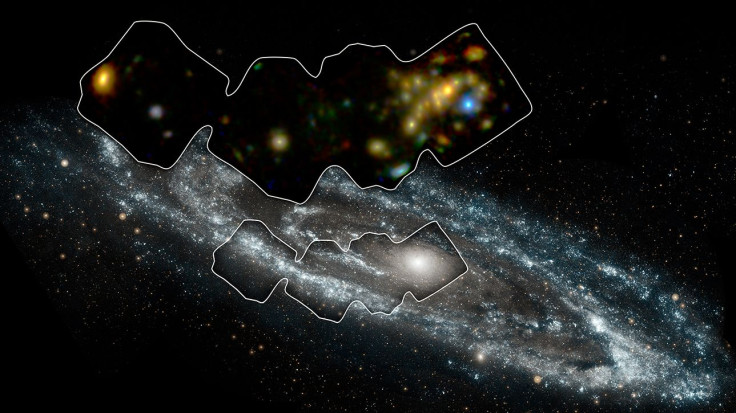NASA Uses NuStar's X-Ray Vision To Peer Into The Andromeda Galaxy

NASA used the Nuclear Spectroscopic Telescope Array (NuSTAR) to obtain the best X-ray observations yet of a section of the Andromeda galaxy, the space agency revealed Tuesday. Astronomers observed 40 objects that could be black holes or neutron stars feeding off their dead companions.
The Andromeda galaxy is the Milky Way's cosmic neighbor, located just 2.5 million light-years away. That's a mere stone's throw in terms of outer space. The close proximity makes Andromeda astronomers' best choice to observe detailed galactic and stellar phenomena. NuSTAR is capable of observing high energy X-ray emissions, which is how the researchers from NASA's Goddard Space Flight Center in Greenbelt, Maryland, were able to detect the 40 objects, dubbed X-ray binaries.
Black holes or neutron stars are the source of the X-ray emissions. These objects were formed after a massive star — part of a binary system with another star — exploded. Through various factors, such as the star's mass and composition, the result of that explosion was either a black hole or an incredibly dense remnant of the explosion known as a neutron star. The gravitational pull from the newly formed black hole or neutron star could siphon off material from its companion, leading to an X-ray emission, which is why scientists call them X-ray binaries.
This interaction could have been an important factor in the evolution of the universe itself. "We have come to realize in the past few years that it is likely the lower-mass remnants of normal stellar evolution — the black holes and neutron stars — may play a crucial role in heating of the intergalactic gas at very early times in the universe, around the cosmic dawn," Ann Hornschemeier, from the Goddard Space Flight Center and principal investigator of the NuSTAR Andromeda studies, said in a statement.
The researchers will attempt to classify which of the 40 objects are black holes and which are neutron stars. The NuStar observations could also lead to a better understanding of how stellar formation in the Milky Way differs from the Andromeda galaxy. The observations could also apply to activity in distant galaxies that are harder to observe.
The research was presented at the 227th meeting of the American Astronomical Society in Kissimmee, Florida.
© Copyright IBTimes 2024. All rights reserved.












